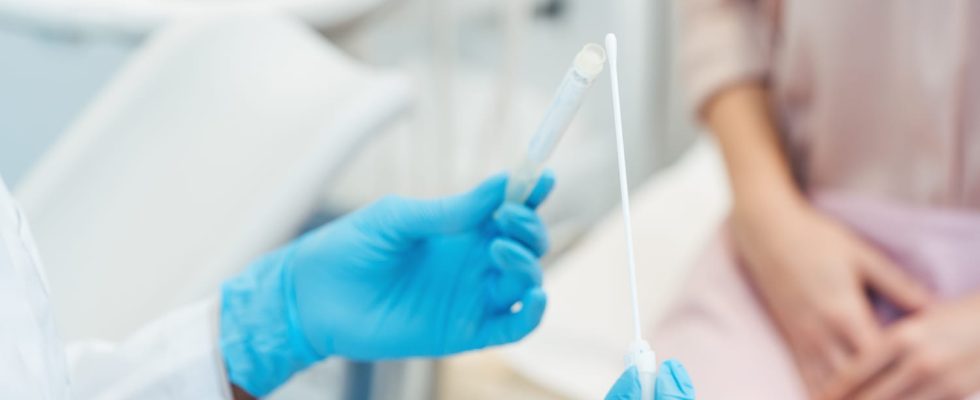After risky sexual intercourse, in the event of suggestive symptoms or when one wishes to stop using a condom, STD/STI screening is essential to find out whether or not one has a sexually transmitted infection.
Screening for an STD or STI is the best way to find out if you have a sexually transmitted disease or infection. Symptoms are not always obvious hence the importance of resorting to early detection in case of doubt to interrupt the chains of transmission, i.e. not contaminate future partners. In 2021, 5.7 million serologies HIV (+8%), 2.3 million screenings for an infection to Chlamydia (+9%), 2.8 million screenings for Syphilis (+3%) and 2.7 million screenings for infection with Gonococcus (+6%) were achieved in France reported Public Health France in December 2022.”It is essential to allow free, autonomous and anonymous screening available to the most vulnerable populations i.e. those who lack information, reside in medical desert areas etc.“defends Dr François Blanchecotte, medical biologist and National President of the Syndicate of Biologists (SDBio) whom we interviewed. How do I screen for STDs? Free ? Or get tested for STIs?
As a reminder, a complete STD screening check-up looks for:
- Chlamydiae trachomatis (chlamydia)
- Neisseria gonorrhoeae or gonococcus (gonococcal disease)
- Mycoplasma genitalium infection (urethritis)
- Mycoplasma hominis (mycoplasma)
- Ureaplasma urealyticum (mycoplasma)
- Trichomonas vaginalis (urogenital trichomoniasis)
- Candida albicans or other species (genital candidiasis or vulvovaginitis)
- Lactobacillus (bacteria of the vaginal flora)
- Gardnerella (vaginosis)
- Mobiluncus (vaginosis)
The complete assessment is carried out when 3 types of diagnosis are combined:
► First of all, the gynecologist performs a clinical examination of the genitals.
► Then the infections are tested by a local sampling and/or urine analysis with culture.
► Finallya blood sample is taken.
In addition to these tests, there is what is called the Rapid Diagnostic Orientation Test (TROD) available in pharmacies and the result of which comes out in 30 minutes. For example, self-testing at home for HIV infection HIV are part of the TRODs. The reading of the results is done directly by the patient. “It is not a biology examination, so they are less reliable than those carried out in the laboratory“ notes Dr. Blanchecotte. Screening is now possible (vaginal for women) in self-sampling (by PCR technique). “The patient takes the sample herself using a specific swab. Today, it is possible to identify all sexually transmitted diseases from a single self-collected swab. We want to make screening as accessible as possible and carry out screening campaigns for women as a preventive measure. The self-test allows screening for women who do not wish to be sampled by a man, knowing that the majority of biologists are male“supports Dr. Blanchecotte.
When to get tested for an STD?
“Anyone who wishes can ask their GP (or another doctor) a prescription for an STI test or go directly to the laboratory to have it done” indicates the medical biologist. Screening for STIs is generally indicated in several situations including following:
- in case of gynecological or urinary symptoms (example mycosis or recurrent cystitis)
- when you want stop using condoms with a partner
- after unprotected sex
- before starting contraception (pill, IUD, etc.)
- before a voluntary termination of pregnancy (IVG)
- when you want to get pregnant
The examination is also recommended in case of risky situations : multiple partners, partner who has been diagnosed with an STI, work in prostitution or even in the event of sexual assault. “Every 5 years (at least, editor’s note), women must have an HPV test (Papillomavirus infection), which screen for cervical cancer“recalls Dr. Blanchecotte.
Where to get tested for STDs (without a prescription)?
Many places do screening for STDs, with or without prescription :
- Medical biology laboratories
- Free information, screening and diagnosis centers (CeGIDD): anonymous and free screening centers (CDAG), STI information, screening and diagnosis centers (CIDDIST)
- sexual health centers
- PMI centers (maternal and child protection)
- AIDS associations
- PASSES (permanent access to health care for people in precarious situations)
Free information, screening and diagnosis centers (CeGIDD) allow free testing for STDs, including people without social security. Screening centers are communicated by calling Sida Info Service on 0 800 840 800. Since January 1, 2022, HIV screening serologies carried out in medical biology laboratories are 100% covered by Health Insurance (and without upfront costs), even without a prescription. Sexual health centers also offer free STD testing. The list is communicated by the site of the Government. “For screenings other than HIV, all examinations are reimbursed as soon as there is a prescription. by Social Security up to 60% and by mutual insurance up to 40%“ indicates our interlocutor.
How long does it take to get the results of an STD test?
The results of a screening carried out by a laboratory are communicated within 24 hours following the completion of the examinations. “Indeed, PCR tests must be analyzed quickly“emphasizes Dr. Blanchecotte.”If a vaginal swab is taken with culture to assess the vaginal flora, the delay will be a little longer” notes the expert. The deadline is several days if the screening is carried out in a health centre.
“When transmitting the results to the patient, the laboratory has the obligation to telephone the attending physician (or another physician if without a prescription) if the result is positive for an STI so that the patient benefits from a reading of his results and from support” says our interlocutor. If the results are negative, there will be no clarification from the laboratory. If in doubt, contact a general practitioner.
Thanks to Dr. François Blanchecotte, medical biologist and National President of the Union of Biologists (SDBio).
Sources:
– Screening for STIs, January 6, 2023, Health Insurance
– Directory of Sexual Health Centers, November 4, 2022, Government
– HIV-STI public health bulletin, December 2022, Public Health France
